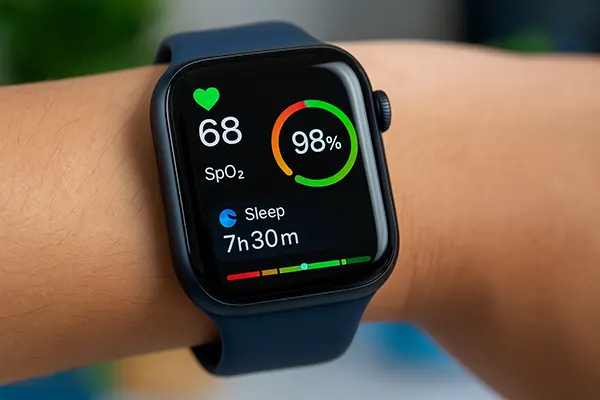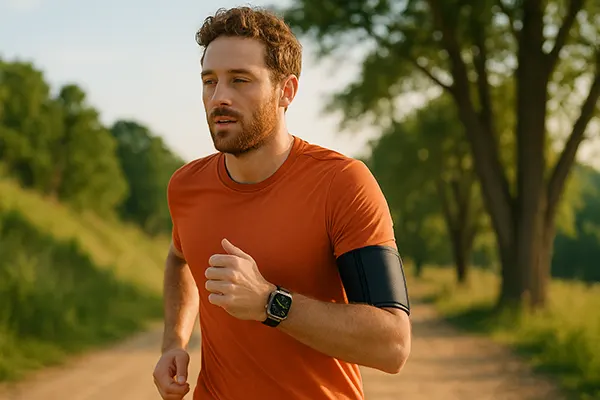Apple Watch and Health in 2025: Innovations, Research, and Limitations

Since its debut, the Apple Watch has transformed from a stylish digital accessory into one of the most sophisticated personal health monitors in the world. In 2025, Apple continues to expand its health ecosystem, integrating advanced sensors, AI-driven insights, and clinical research collaborations that reshape how people manage their well-being. This evolution reflects the company’s long-term goal: turning the Apple Watch into a reliable medical-grade device accessible to everyday users.
Advanced Health Features Introduced in 2025
The 2025 Apple Watch Series 10 brings groundbreaking biometric capabilities. The most anticipated update is the non-invasive blood glucose monitoring system. While still awaiting regulatory approval in some regions, the feature has shown promising accuracy in trials conducted in the United States and the European Union. This innovation allows users with diabetes or insulin resistance to monitor their glucose trends continuously without finger-prick tests.
Apple has also enhanced heart-health monitoring through improved ECG sensitivity and irregular rhythm notifications. The new optical sensor employs a dual-wavelength system to detect atrial fibrillation episodes more accurately. Users now receive early warnings about potential heart conditions, supported by on-device AI that learns from individual cardiac patterns over time.
Another major improvement is the sleep and mental health tracking module. In cooperation with Stanford Medicine, Apple has refined its sleep-stage algorithm, making it 25% more precise. The watch can now identify signs of mild sleep apnea and stress patterns by analysing micro-movements, heart rate variability, and skin temperature changes throughout the night.
AI Integration and Preventive Health Insights
Artificial intelligence lies at the core of Apple’s 2025 health strategy. The watch now uses the Health Neural Engine, a new on-device system that interprets health data locally for better privacy and faster results. AI-generated insights suggest lifestyle adjustments, such as hydration reminders, heart-rate recovery alerts, and personalised workout intensity targets.
In addition, Apple introduced a “Health Check-In” feature that provides weekly wellness summaries. These reports combine activity trends, sleep quality, and stress indicators, highlighting potential health concerns before they escalate. This preventive model marks Apple’s transition from passive tracking to active, data-driven health management.
Apple also expanded its partnerships with universities and hospitals to strengthen its datasets for clinical research. The anonymised information gathered from volunteers fuels large-scale studies on cardiovascular disease, women’s health, and early neurological detection—bridging the gap between consumer technology and scientific medicine.
Ongoing Research and Medical Collaborations
In 2025, Apple’s focus on evidence-based health applications became even more prominent. The company’s collaboration with the University of Toronto and the Mayo Clinic explores the correlation between wearable-detected respiratory patterns and early signs of chronic lung diseases. Preliminary findings indicate that subtle changes in oxygen saturation and breathing cadence can predict early-stage COPD and asthma flare-ups.
Furthermore, the “Apple Heart Study 2.0” has expanded globally, involving over 2 million participants. It aims to refine the prediction algorithms for arrhythmias and cardiac anomalies by using long-term, anonymised data. The research continues to demonstrate the potential of wearable devices in large-scale population health monitoring.
Women’s health remains another strategic priority. The updated Cycle Tracking app in 2025 includes predictive fertility analytics powered by AI, leveraging basal temperature and hormonal rhythm data. Apple’s transparent collaboration with medical experts ensures that the feature maintains clinical accuracy without replacing professional medical advice.
Privacy and Data Protection Standards
Apple continues to set industry standards for health-data privacy. In 2025, all health metrics are processed locally on the device through the Health Neural Engine, with optional end-to-end encryption for cloud backups. Users have full control over which data is shared with third-party apps or healthcare providers.
Apple’s compliance with the latest EU Digital Health Regulations and the US Health Insurance Portability and Accountability Act (HIPAA) ensures that all stored and transmitted health data meets the highest security requirements. Transparency reports, published quarterly, outline how health data is handled and which research partners access anonymised datasets.
This emphasis on user trust underlines Apple’s position as a responsible innovator. Rather than monetising personal data, the company continues to prioritise ethical technology development—balancing innovation with individual rights and informed consent.

Limitations and Future Prospects
Despite the impressive advancements, the Apple Watch still faces challenges in 2025. Non-invasive glucose measurement, while promising, requires further clinical validation to match the accuracy of dedicated medical devices. Similarly, stress and mood tracking remain indirect assessments rather than medical diagnoses.
Another limitation is the device’s dependency on battery life. With more sensors and constant health monitoring, energy efficiency remains a key engineering hurdle. Although Apple introduced a new low-power health mode that extends monitoring to 48 hours, it still falls short for users who prefer continuous tracking without nightly charging.
Looking ahead, Apple is exploring blood pressure and hydration monitoring through optical spectroscopy. Research prototypes already exist, and early testing suggests non-invasive hydration detection could debut within the next two product cycles. As Apple refines its ecosystem, the line between consumer wearables and certified medical tools will continue to blur.
The Broader Impact on Digital Health
By 2025, Apple’s contributions to digital health extend far beyond individual well-being. The integration of wearable data into healthcare systems allows doctors to monitor patients remotely, improving diagnosis accuracy and reducing hospital readmissions. HealthKit’s compatibility with electronic medical records makes real-time data sharing more efficient than ever.
Moreover, the Apple Watch encourages proactive health behaviour among users. According to recent studies by Harvard Health, consistent use of wearables like the Apple Watch can lead to a 15% increase in daily activity levels and a noticeable reduction in sedentary time. These outcomes contribute directly to public health improvements on a societal scale.
In summary, the Apple Watch in 2025 symbolises the future of personalised medicine: accurate, private, and seamlessly integrated into daily life. While limitations persist, Apple’s commitment to responsible innovation ensures that its devices remain at the forefront of the global health technology revolution.
